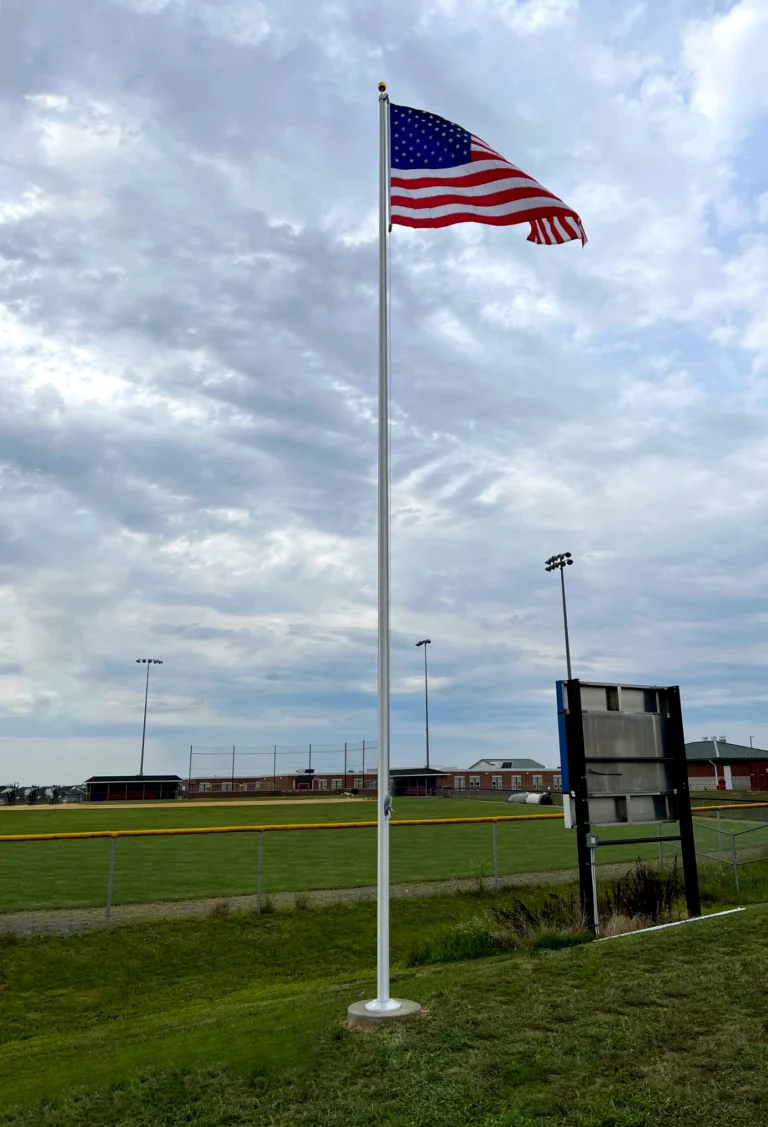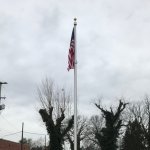When carried in procession with another flag or flags, the Stars and Stripes should be at the right-front of the column, or when there is a line of other flags, in front of the center of that line. The flag should never be carried flat or horizontally, but always aloft and floating free.
When a number of flags are grouped and displayed from staffs, the flag of the United States should be in the center or at the highest point of the group. When displayed with another flag from crossed staffs, the flag of the United States should be on the right (the flag’s own right), and its staff should be in front of the staff of the other flag.
If the flag is displayed from a staff projected from a window sill, balcony or front of a building, the union of the flag should go to the peak of the staff (unless the flag is to be displayed at half-staff).
When the flag is displayed in any manner other than being flown from a staff, it should be displayed flat, whether indoors or out. If displayed either horizontally or vertically against a wall, the union should be uppermost and to the flag’s own right; that is to the observer’s left. When displayed in a window it should be suspended in the same way-that is, with the union to the left of the observer in the street.
When displayed over the middle of the street, the Stars and Stripes should be suspended vertically with the union to the north on an east-west street and to the east on a north-south street.
When the flag is suspended over a sidewalk from a rope extending from house to pole at the edge of the sidewalk, the flag should be hoisted out from the building toward the pole union first.
When used on a speaker’s platform the flag may be displayed flat, above and behind the speaker. If flown from a staff it should be on the speaker’s right; all other flags on the platform should be on his left.
When it is displayed on the pulpit or chancel in a church, the flag should be flown from a staff placed on the clergyman’s right as he faces the congregation. All other flags on the pulpit or chancel should be on his left.
However, when the flag is displayed on the floor of a church or auditorium, on a level with the audience, it is placed to the right of the audience.
When flags of states or cities, or pennants of societies, are flown on the same halyard with the flag of the United States, the latter should always be at the peak. When flown from adjacent staffs, the Stars and Stripes should be raised first and lowered last.
When used to cover a casket, the flag should be placed so that the union is at the head and over the left shoulder. The flag should not be lowered into the grave or allowed to touch the ground. The casket should be carried foot-first from the hearse to the grave.









